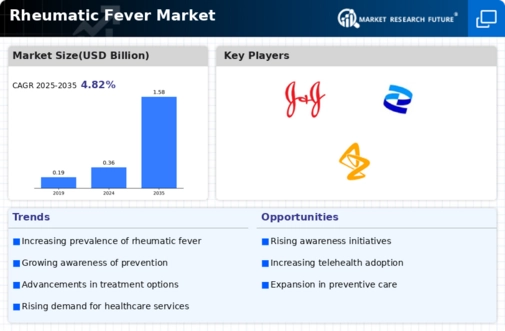Market Analysis
In-depth Analysis of Rheumatic Fever Market Industry Landscape
The rheumatic fever market is driven by a complex interaction of various factors that have an effect on the approach of health care industry towards this inflammation disease. Within the medical and pharmaceutical sectors, rheumatic fever (RF) which results from untreated streptococcal infections is both a challenge and an opportunity. Market forces are determined by various factors such as variation in prevalence, method of diagnosis, treatment options available, research initiatives and economic considerations.
The prevalence of rheumatic fever is one of the key determinants of market dynamics. Although there has been decline in number cases of this condition in many developed nations, it remains a major public health problem in some regions where access to healthcare is limited and streptococcal infections are common. The market adjusts itself to different prevalence rates by modifying its diagnostic approaches and treatment strategies that are relevant for each population affected.
Diagnostic methods play a very important role in the market dynamics associated with rheumatic fever. Early and accurate diagnosis is vital for proper management and prevention from complications like rheumatic heart disease. Advances in diagnostic technology such as molecular testing, echocardiography and serological assays among others also affect the market. Better diagnostics lead to improved patient outcomes while also guiding the development of targeted therapies.
Market forces on rheumatic fever depend on treatment options with emphasis on symptom control as well as relapse prevention. Antibiotics particularly penicillin’s form the core drugs used to treat streptococcus as well as prevent subsequent development of RF disease. Netty teas cause relief from signs among them nonsteroidal anti-inflammatory drugs (NSAIDs). In response to research efforts aimed at developing more targeted therapies and addressing autoimmune aspects involved with RF; current markets show their concern.
Market forces for RF are significantly influenced by continuing research activities. Researchers’ collaborative efforts with health providers including drug manufacturers aim at enhancing understanding about possible causes or pathways for treating or managing such conditions. Once scientific discoveries occur that might assist in the development of new therapies and methods for preventing rheumatic fever, such findings will automatically be used to shape market forces.
Market dynamics of RF are influenced by economic factors such as healthcare spending and medical access. Cost of drugs, diagnostic tests and possible surgical interventions can affect patients’ chances of seeing a doctor. As for pharmaceutical companies and healthcare providers among other market participants; they should always take into account economic considerations when dealing with issues related to treatments for rheumatic fever.
Early detection mechanisms and preventive measures have an impact in the market dynamics through public health campaigns. Better understanding on streptococcal infections themselves as well as their timely management consequences among others has potential effects on patient outcomes. Thus, markets are responding to these moves by encouraging learning programs while at the same time advocating for policies aimed at promoting prevention programs and access to relevant health services.






Leave a Comment